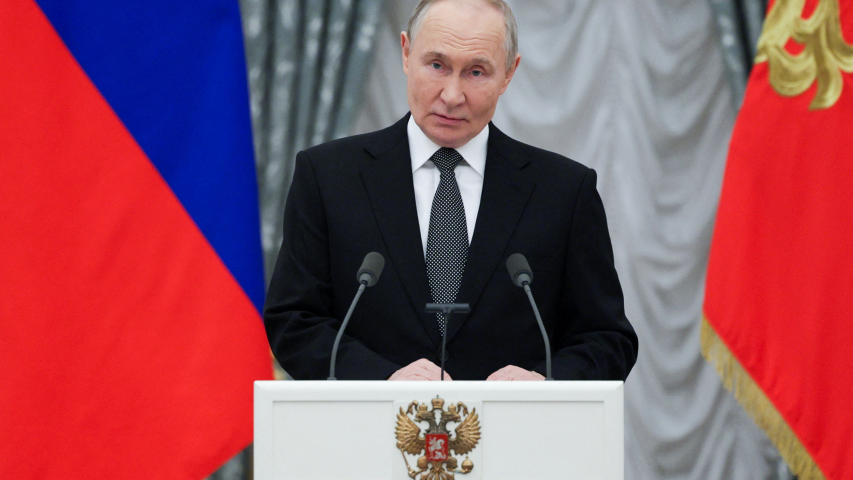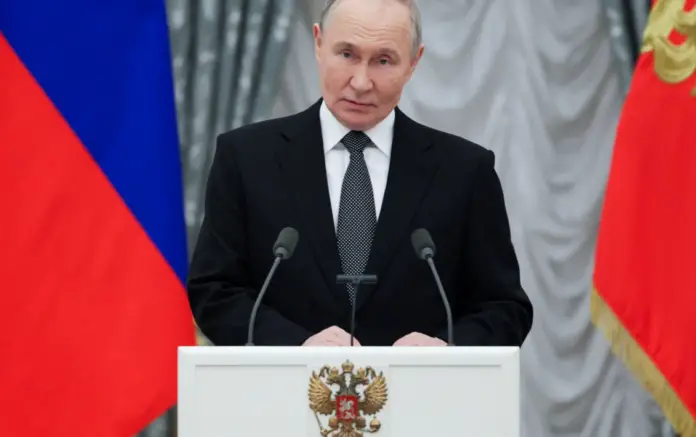A day after US President Donald Trump imposed 25% tariffs on Mexico, Canada and China, Vladimir Putin’s government announced the expansion of its foreign exchange market, allowing Mexico and six other nations to participate in financial operations within Russia.
The Russian government reported through its official website that the number of friendly and neutral countries whose banks and financial brokers will be able to operate in the Russian foreign exchange market has been expanded to 40, facilitating transactions in rubles and national currencies without the need for intermediaries in dollars or euros.
“Sovereignty is not negotiable”: Sheinbaum responds to Trump for tariffs
Mexico now with access to the Russian foreign exchange market
The new list of approved countries includes Mexico, Argentina, Cambodia, Laos, Nigeria, Tunisia and Ethiopia, who join the more than 30 countries already authorized in September 2023, such as China, Brazil, India, the United Arab Emirates, Turkey and South Africa.
This move seeks to strengthen the direct conversion of national currencies in Russian trade, reducing dependence on the dollar and the euro, in line with the federal law “On Organized Trade” adopted in July 2023.
“This agreement will improve the efficiency of the mechanism for converting national currencies of friendly and neutral countries, establishing direct quotes against the ruble to meet the demand of the Russian economy,” the official statement from the Russian government said.
Trump imposes tariffs on Mexico, Canada and China
US President Donald Trump ordered the establishment of general tariffs of 25% on Canada and Mexico and 10% on China, the White House reported yesterday Saturday.
Trump announced new tariffs by signing orders at his Mar-a-Lago club.
“President Donald Trump is taking decisive action to protect Americans from the fentanyl crisis. Fentanyl is the leading cause of death among Americans aged 18 to 45,” the White House said on social media.
“Today’s tariff announcement is necessary to hold China, Mexico and Canada accountable for their promises to stop – to stop the flow of toxic drugs into the United States,” he added.
Energy-related products from Canada will be subject to a tariff of only 10 percent. The new tariff on Chinese products will be an additional 10 percent on top of what is already charged as a result of the trade war between the United States and China.
“I think there could be some temporary, short-term disruption, and people will understand that,” Trump said. “Tariffs will make us very rich and very strong.”
At the start of his second term as president, Trump confirmed the creation of the External Revenue Service to collect tariffs and other revenues from abroad.
“I will immediately begin to change our trading system to protect American workers and their families; instead of using our taxes to enrich other countries, we will tax other countries to enrich our citizens,” Trump said on January 20.
According to some analysts, Trump intends to raise more tax revenue through tariffs and give protection to American industry to attract more investment to his country, but they will increase inflation and damage regional and global supply chains.
Mexico ranks first among the United States’ trading partners in terms of merchandise trade, and 80% of Mexican exports are destined for the United States.
In bilateral trade in products from January to November 2024, Mexican exports totaled $466.626 billion and U.S. exports were $309.421 billion, with a favorable balance for Mexico of $157.205 billion in the trade balance.
According to the U.S. Department of Commerce, the average manufactured product from Mexico contains 40% U.S. content, and the average manufactured product from Canada contains 25% U.S. content.
Much of the economic relationship between these countries takes place in the context of the USMCA, which came into force in July 2020, replacing the North American Free Trade Agreement, in force since January 1994.
Mexican government data shows that the United States is the largest source of Foreign Direct Investment (FDI) in Mexico, accounting for 40.9% of total FDI in Mexico from 2006 to September 2024, with a cumulative total of $242,864 million in that period.

Source: eleconomista




